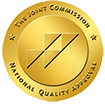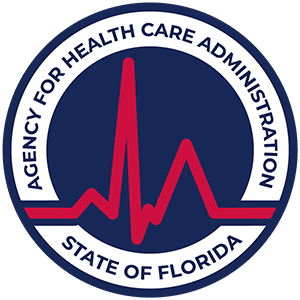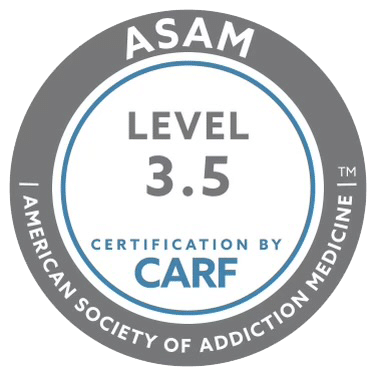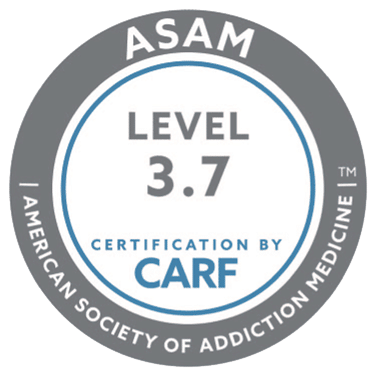Opioid addiction is a serious condition that affects millions of people around the world. Even though they come from plants, this class of drugs can be exceptionally dangerous.
Using opioids too frequently may lead to several side effects, including shakes, hallucinations, and mental fog. On top of that, with extended use, people can develop an addiction.
Not only will this impact their quality of life, but quitting the drug can also prove challenging. You have to deal with withdrawal symptoms as well as create coping mechanisms that keep you on the wagon.
So, if you or a loved one need opioid addiction treatment, we can help at the Recreate Behavioral Health Network. We offer several forms of therapy that can help you stay on the road to recovery.
In this guide, we’ll cover why these drugs pose such a risk and how to overcome an opioid addiction.
Opioid Addiction Overview
The history of opioids goes back thousands of years, and it all starts with poppies. Back in 3,400 B.C., people in lower Mesopotamia (Southeast Asia) grew these flowers to extract opium.
This was a common ingredient in many traditional medical practices. That’s because opium could treat cases of chronic pain. Before long, people all over the world began using the plant.
It wasn’t until the 1860s that opioids made their way to the US. At the time, doctors prescribed these drugs to soldiers who were dealing with severe wounds, diarrhea, swelling, and inflammation.
However, opioids also cause euphoria. So, people started using the drug recreationally, and it made its way to the illegal drug industry.
Today, there are several types of opioids on the market. These include:
- Tramadol
- Morphine
- Methadone
- Heroin
- Fentanyl
- Codeine
While opioids were incredibly effective at treating physical conditions, they could alter an individual’s brain chemistry. This can lead to a significant drug abuse disorder.
How Do Opioids Affect the Body?
When a person experiences pain or goes through a high-stress situation, their body will release endorphins. These are natural opioids that can alleviate pain and cause a sense of relaxation.
Synthetic opioids can mimic this effect by targeting nerve cells. They bind to opioid receptors all around a user’s system in areas such as the brain, spinal cord, and gut.
This will block pain messages from traveling throughout their body and lead to a sense of euphoria. Over time, the user’s system will stop natural opioid production.
So, without the drug, they’ll have a tough time functioning normally. That’s what we call developing a dependence.
Opioid Addiction Statistics
According to the World Health Organisation (WHO), about 296 million people around the world used opioids in 2021. While most of these users have prescriptions, some have to resort to illegal means to get their hands on the drugs.
However, not all users develop a chemical dependency. On average, only 3% to 19% of people who take opioids become addicted.
This may seem like a small figure, but we’re talking about the entire world population. So, this translates to around 39.5 million people with opioid substance disorders.
Signs of Opioid Dependence
There are quite a few signs that can indicate a person is struggling with an opioid addiction. Depending on how long they’ve been using the drug, the symptoms can vary.
With short-term use, some of the most notable signs are:
- Irritability
- Extreme mood swings
- Blurred vision
- Increased appetite
- Insomnia
- Social isolation
- Tremors and shakes
- Anxiety
However, if a person relies on opioids for an extended period, they can develop much more serious signs of addiction. These include:
- Aggressive behavior
- Heart infections
- Lung damage
- Collapsing veins
- Short-term memory loss
- Nausea
- Loss of appetite
On top of that, long-term opioid use can cause significant damage to the heart. The drug will weaken the muscle over time and impact its ability to pump blood around the body.
This can lead to general numbness that’s challenging to resolve even with the help of medical professionals.
Opioid Tolerance and Dosage
If you’re taking opioids under a doctor’s supervision, you don’t have to worry about developing a tolerance or addiction. These drugs are completely safe if taken in the proper dosage.
However, illegal opioids are a different story. Since most users self-medicate, they can develop a dependence in a flash.
Based on the drug in question, addiction can happen at varying rates. For instance, with heroin, many users exhibit signs of substance abuse immediately after the first dose. However, other opioids may require a longer period to cause addiction.
Plus, as the user develops a tolerance to the drug, they need to constantly increase the dosage to achieve a euphoric state. This is a slippery slope that can lead to a fatal overdose.
If a person takes a high opioid dosage over a short period, they can experience convulsions and difficulty breathing. Without swift action, this can have deadly consequences.
Opioid Withdrawal Symptoms
One of the main drawbacks of an opioid addiction is that quitting can be a difficult process. When a person struggling with substance abuse stops using their drug of choice, they can experience painful physical and mental side effects.
These opioid withdrawal symptoms can manifest as:
- Cramping
- Excessive sweating
- Dull aches
- Vomiting
- Psychosis
- Hallucinations
- Depression
- Demotivation
While opioid withdrawal is rarely fatal, it can lead to serious medical conditions with long-term effects. For example, depression can cause a user to experience suicidal thoughts, which can be life-threatening.
Opioid Addiction Treatment Plan
Creating an opioid addiction treatment plan can change based on several factors such as the user’s age, gender, height, and weight. That’s why people who struggle with substance abuse need a tailored program that will address all of their specific needs.
Luckily, at the Recreate Behavioral Health Network, we offer several customizable treatment options that can help you kick an opioid habit. Here are some of the services we provide:
1. Medical Detoxification
On average, opioid withdrawal symptoms can last between three to five days. However, in some cases, this can increase to 10 days.
While managing these side effects on your own is possible, it can be incredibly challenging. Many users will find it difficult to move or even eat while dealing with withdrawal.
So, to avoid any unnecessary complications, it’s best to enroll in a detoxification program. There, you can eliminate opioids from your system with proper medical supervision.
2. Residential Addiction Treatment
For some people who struggle with addiction, detoxification isn’t enough to stop them from falling off the wagon. That’s because they create negative habits to maintain their substance abuse disorder.
The only way around this issue is to unlearn destructive behavior. To do that, the person struggling with addiction needs to disconnect from the world and focus on their sobriety.
Thankfully, a residential program can help with that. With this treatment plan, patients stay at a drug rehab facility for around a month.
This creates the perfect environment for them to get clean and come up with coping mechanisms to curb cravings and ignore triggers.
3. Intensive Outpatient Program
If a person struggling with addiction doesn’t have the time to take a month off work or school, they can opt for an intensive outpatient program. This option allows them to receive substance abuse treatment on a part-time basis.
Usually, a patient will spend between 9 and 20 hours a week in a drug rehab facility. During this time, they attend various therapy sessions to uncover the root cause of their addiction issue.
Plus, we offer evening therapy, meaning you can maintain your normal working routine in the morning.
4. Partial Hospitalization
Partial hospitalization is a stricter form of intensive outpatient treatment. With this program, people who suffer from addiction have to attend between 20 to 40 hours of rehab therapy every week.
This makes it ideal for people who are new to recovery and need a little extra attention. Doctors will monitor the patients while they’re in rehab and can offer certain medications to curb opioid cravings.
5. Teletherapy
If a person struggling with addiction feels like they need support while they’re out and about, teletherapy can be a lifesaver. Using your phone, you can schedule emergency therapy sessions with certified medical professionals, which may include phone calls or video chats.
This option offers a flexible treatment plan that can work for any schedule.
6. Medication-Assisted Therapy
When the symptoms of opioid withdrawal get out of hand, staying sober can be next to impossible. Fortunately, medication-assisted therapy can come in handy in this situation.
There are several drugs on the market, like methadone and buprenorphine, that reduce withdrawal symptoms. Besides that, doctors can prescribe naltrexone, which will take away the euphoric effects of opioids.
This can be an excellent tool to deter people from using drugs.
Wrapping Up
At the Recreate Behavioral Health Network, we offer several opioid addiction treatment options. Depending on the severity of the substance abuse disorder, we can provide you with many programs.
For instance, for people who have a minor chemical dependency, detox treatment, teletherapy or outpatient treatment should do the trick.
As for individuals with a significant addiction, they need extra care and attention. So, they should opt for partial hospitalization, medication-assisted therapy, or residential treatment.







